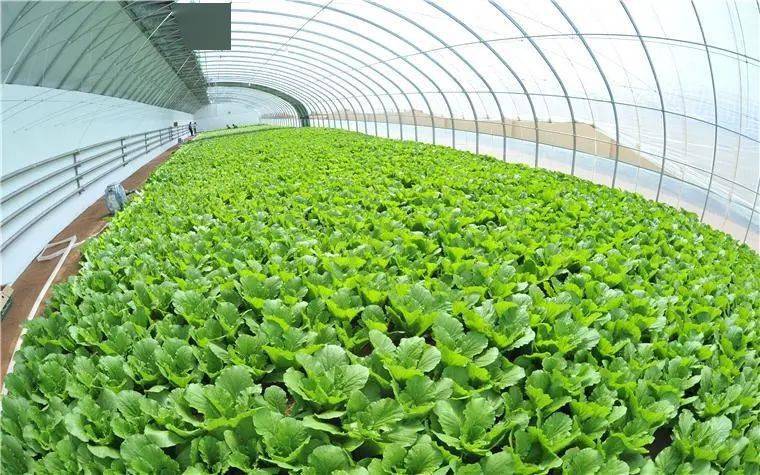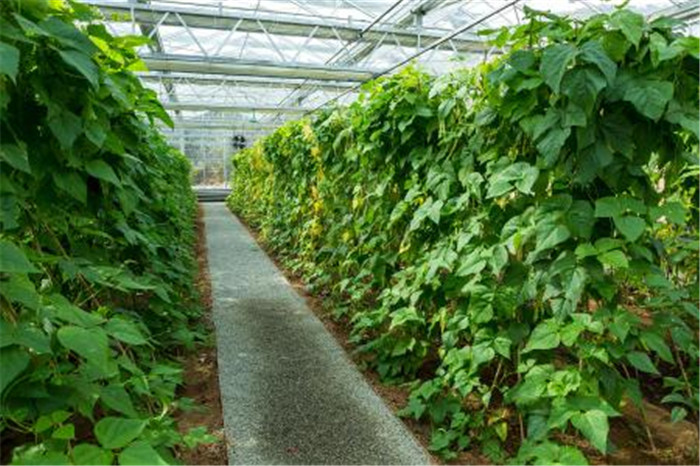

— Blogs —
—Products—
 Consumer hotline +8618073152920
Consumer hotline +8618073152920 WhatsApp:+8615367865107
Address:Room 102, District D, Houhu Industrial Park, Yuelu District, Changsha City, Hunan Province, China
Product knowledge
Time:2023-09-17 17:04:04 Popularity:1114
Counter-seasonal Vegetable Cultivation and Small-Scale Weather Station Monitoring: Enhancing the Benefits of Agricultural Production
Counter-seasonal vegetable cultivation refers to the use of artificially controlled environmental conditions through facilities such as greenhouses and greenhouses during seasons that would otherwise be dormant or unsuitable for cultivation. This type of cultivation can expand and extend the supply cycle of vegetables to meet market demand.

Cultivation of counter-seasonal vegetables has the following advantages:
1. Providing a year-round supply: Through anti-seasonal cultivation, it is possible to provide a steady supply of vegetables in seasons when they should not be growing. This meets consumer demand for fresh vegetables, thus providing a year-round supply.
2. Increase farm income: As counter-seasonal vegetables are relatively less available in the market, their prices tend to be higher. Therefore, growers can earn higher incomes through counter-seasonal cultivation during the off-season when vegetable prices are lower.
3. Reducing the impact of weather disasters: Growing vegetables in greenhouses or greenhouses can effectively reduce the impact of weather disasters on crops, such as strong winds, low temperatures and droughts. Growers can manually regulate conditions such as temperature, humidity and irrigation to provide a stable and suitable growing environment for vegetables.
4. Control of pests and diseases: Growing vegetables in a closed environment can effectively control and reduce the occurrence of pests and diseases. Compared with open-air planting, anti-seasonal vegetable planting is easier to monitor and control pests and diseases, which improves the yield and quality of vegetables.
The cultivation of counter-seasonal vegetables makes an important contribution to the diversity of vegetable market supply. However, the environment of greenhouse growing is somewhat different from that of open-air growing. Knowledge of meteorological factors such as air temperature and humidity, light intensity and carbon dioxide concentration in greenhouses is essential for farmers to plan their cultivation, prevent pests and diseases and optimise agricultural production. In this regard, monitoring by small meteorological stations plays an active role.
1. Providing accurate meteorological information:
Small weather stations can monitor meteorological data such as temperature and humidity, light intensity and carbon dioxide concentration in the greenhouse in real time. These data provide farmers with accurate climate information and help them understand the environmental changes in the greenhouses. By analysing these data, farmers can take the necessary pest control measures in a timely manner to minimise losses.
2. Optimising farming activities:
The monitoring results of small weather stations can provide farmers with reasonable guidance on farming activities. For example, based on temperature and humidity data, farmers can determine the appropriate time for sowing and transplanting to avoid delays or losses due to poor weather conditions. In addition, light intensity data can help farmers identify areas with suitable light for better planting layout.
3. Enhancing the efficiency of agricultural production:
With the monitoring of small weather stations, farmers can manage the greenhouse environment in a more refined way. By monitoring the carbon dioxide concentration, farmers can understand the respiration of plants and adjust the ventilation equipment in time to ensure sufficient oxygen supply. At the same time, by monitoring temperature, humidity and light intensity, farmers can provide optimal growing conditions for plants, thus improving yield and quality.
4. Reduce costs and improve efficiency:
The automated monitoring system of small weather stations can reduce the cost and time of manual measurement and data recording. Farmers no longer need to spend a lot of time and effort monitoring meteorological parameters in their greenhouses, but can instead access the data from the mini-weather station remotely to get the information they need. This greatly simplifies the operation process and increases the efficiency of agricultural production.

Conclusion:
The monitoring of small weather stations provides rational guidance on farming activities and ways to optimise agricultural production for counter-seasonal vegetable cultivation. With accurate meteorological data, farmers can adjust their planting plans in a timely manner, reduce the risk of pests and diseases, and improve the efficiency of agricultural production. With the continuous progress of technology, small weather stations will play a more important role in agricultural production, providing farmers with more refined and intelligent agricultural environmental services.
Prev:Portable weather stations for agriculture
Next:Agricultural Meteorological Monitoring Station: making weather work for farmers
Related recommendations
Sensors & Weather Stations Catalog
Agriculture Sensors and Weather Stations Catalog-NiuBoL.pdf
Weather Stations Catalog-NiuBoL.pdf
Related products
 Combined air temperature and relative humidity sensor
Combined air temperature and relative humidity sensor Soil Moisture Temperature sensor for irrigation
Soil Moisture Temperature sensor for irrigation Soil pH sensor RS485 soil Testing instrument soil ph meter for agriculture
Soil pH sensor RS485 soil Testing instrument soil ph meter for agriculture Wind Speed sensor Output Modbus/RS485/Analog/0-5V/4-20mA
Wind Speed sensor Output Modbus/RS485/Analog/0-5V/4-20mA Tipping bucket rain gauge for weather monitoring auto rainfall sensor RS485/Outdoor/stainless steel
Tipping bucket rain gauge for weather monitoring auto rainfall sensor RS485/Outdoor/stainless steel Pyranometer Solar Radiation Sensor 4-20mA/RS485
Pyranometer Solar Radiation Sensor 4-20mA/RS485
Screenshot, WhatsApp to identify the QR code
WhatsApp number:+8615367865107
(Click on WhatsApp to copy and add friends)